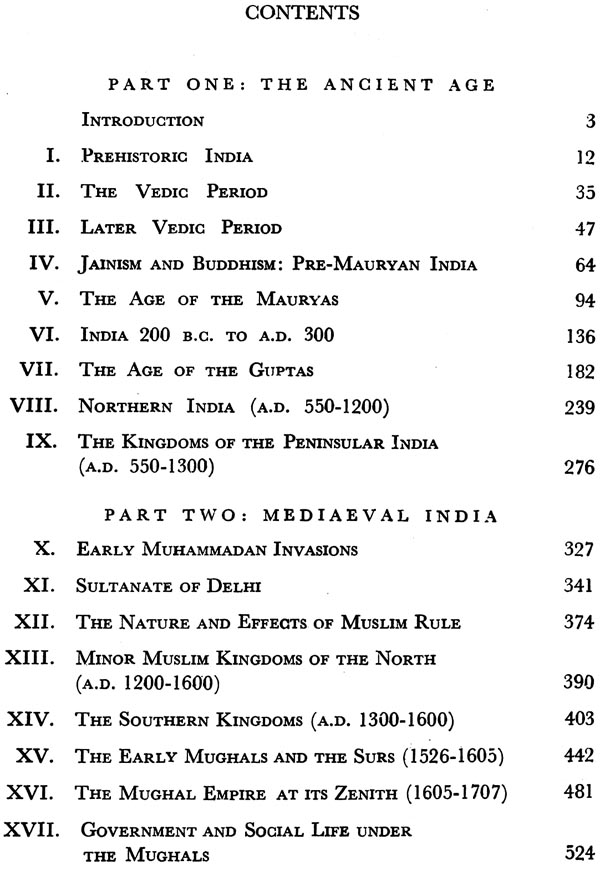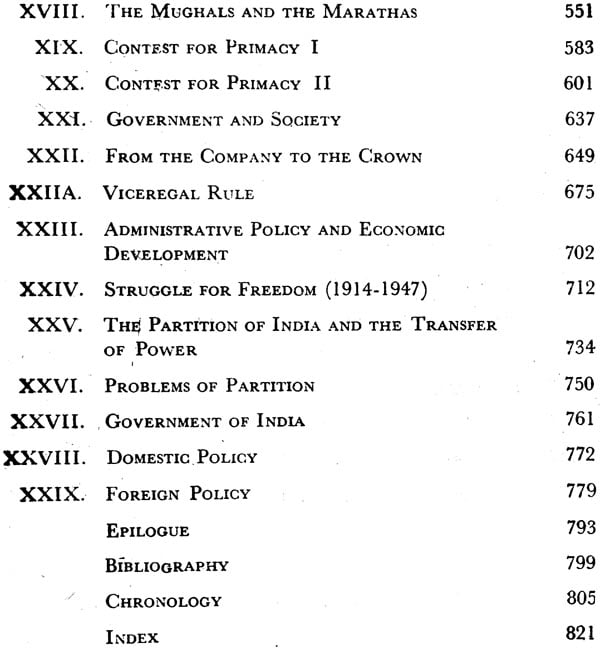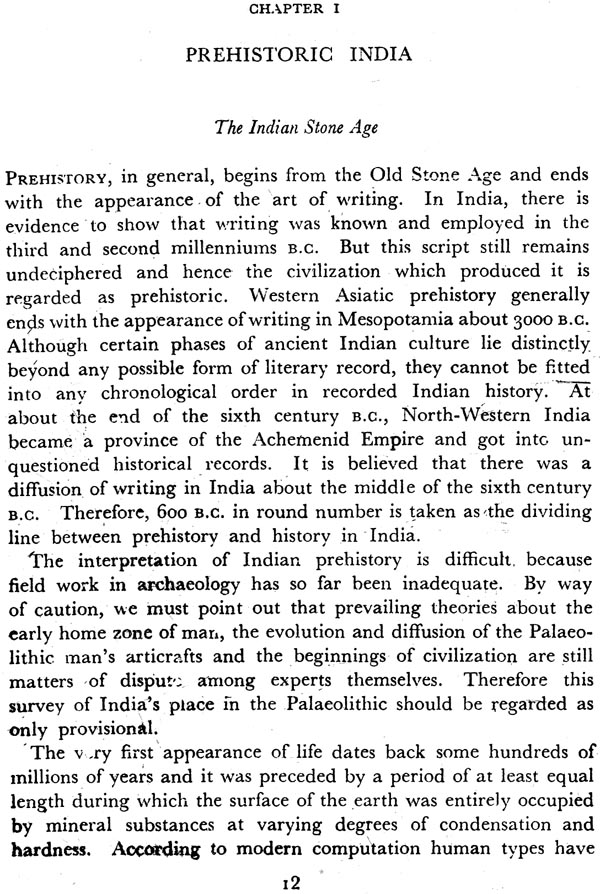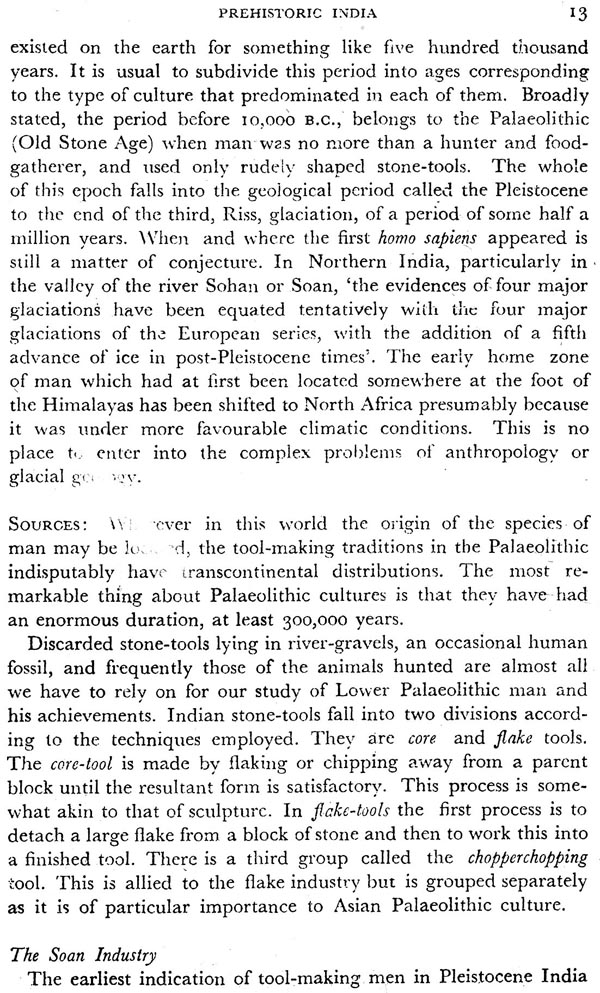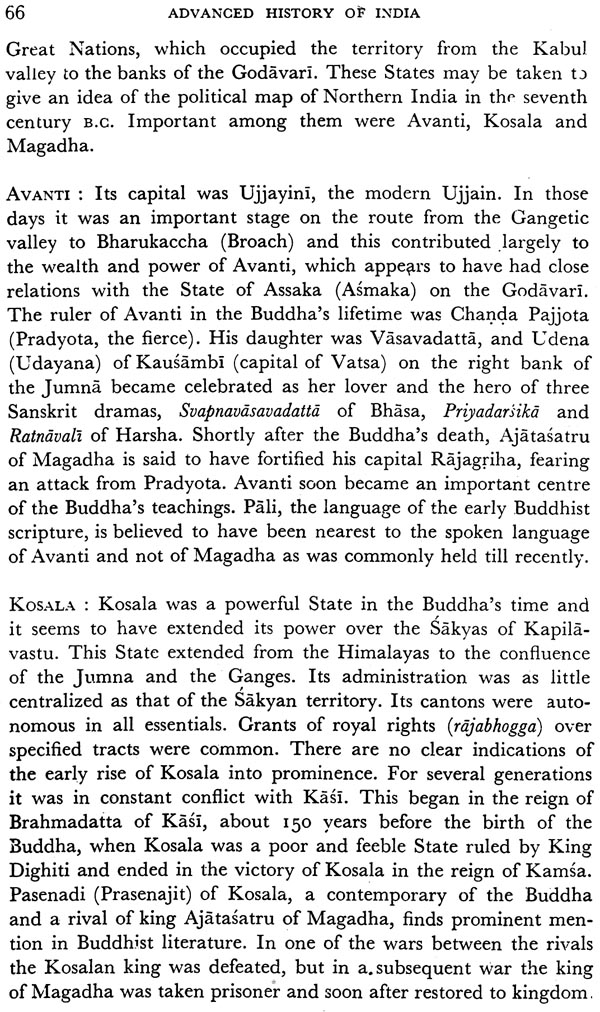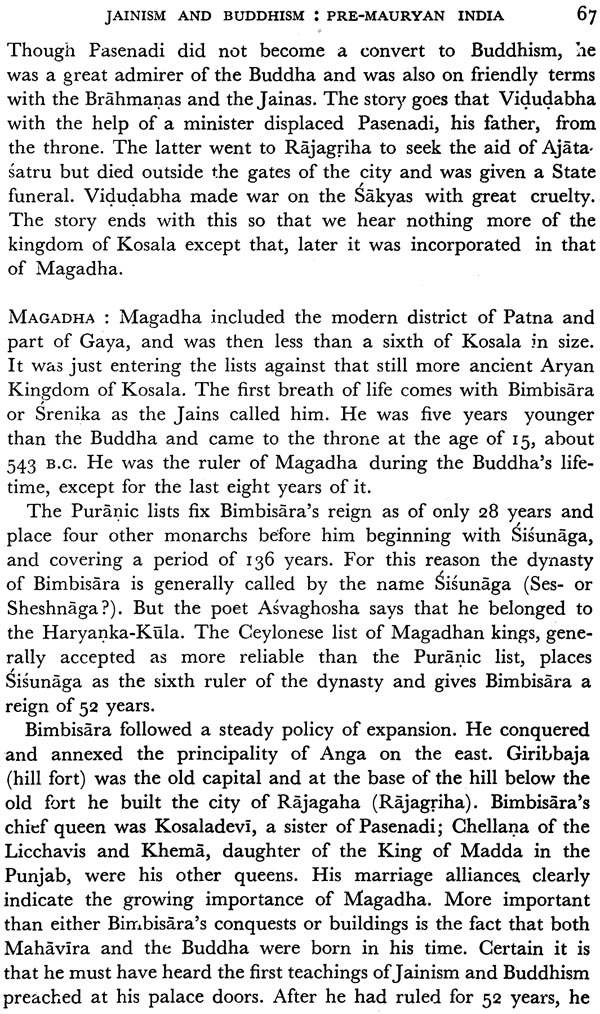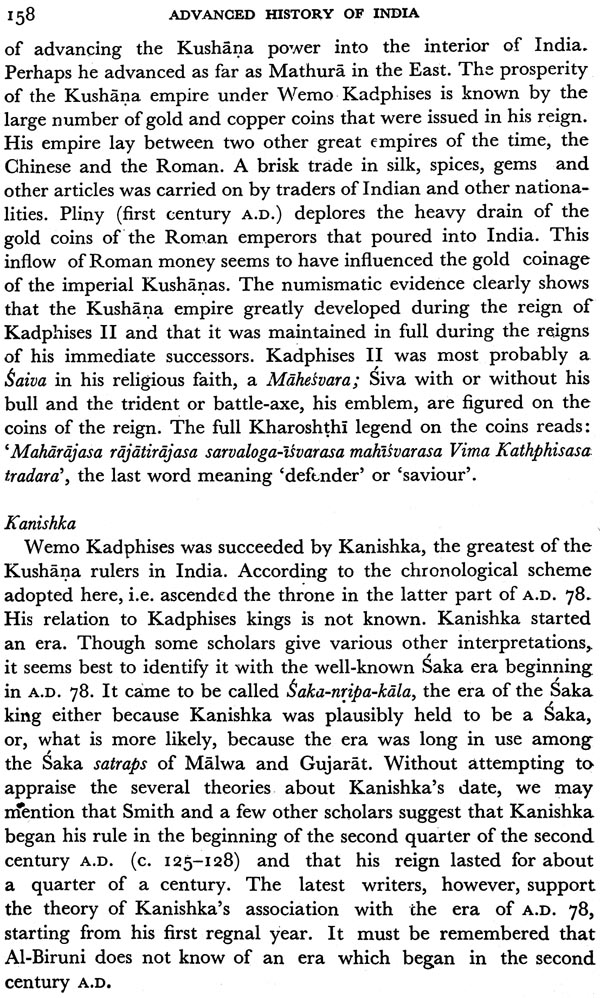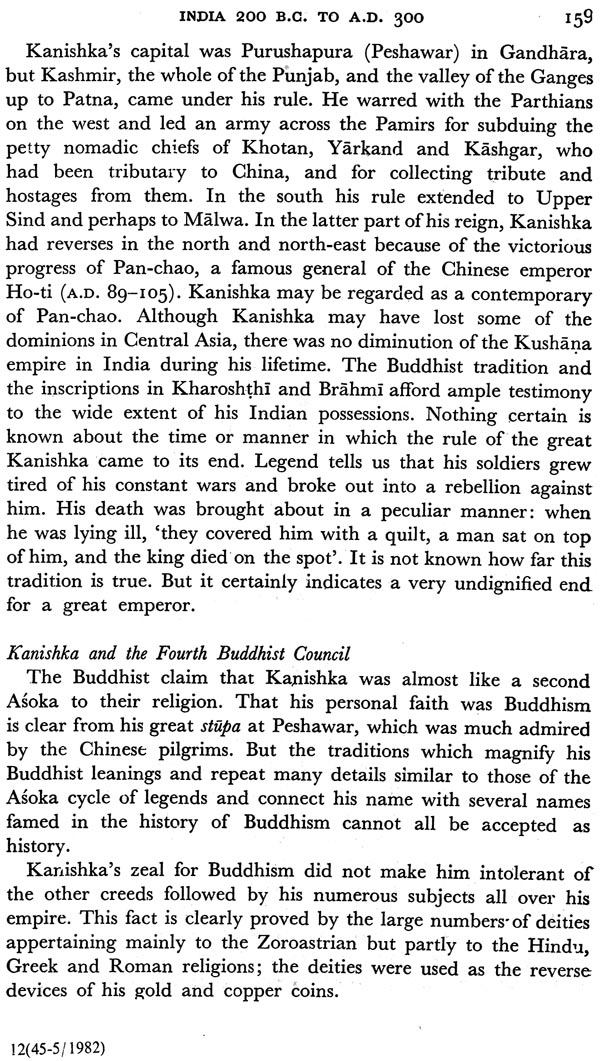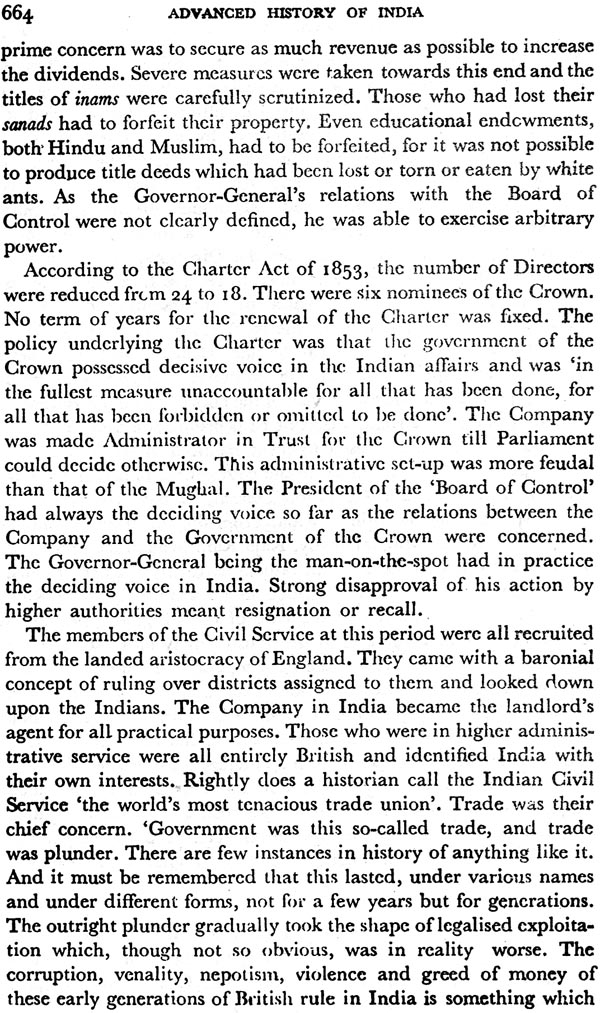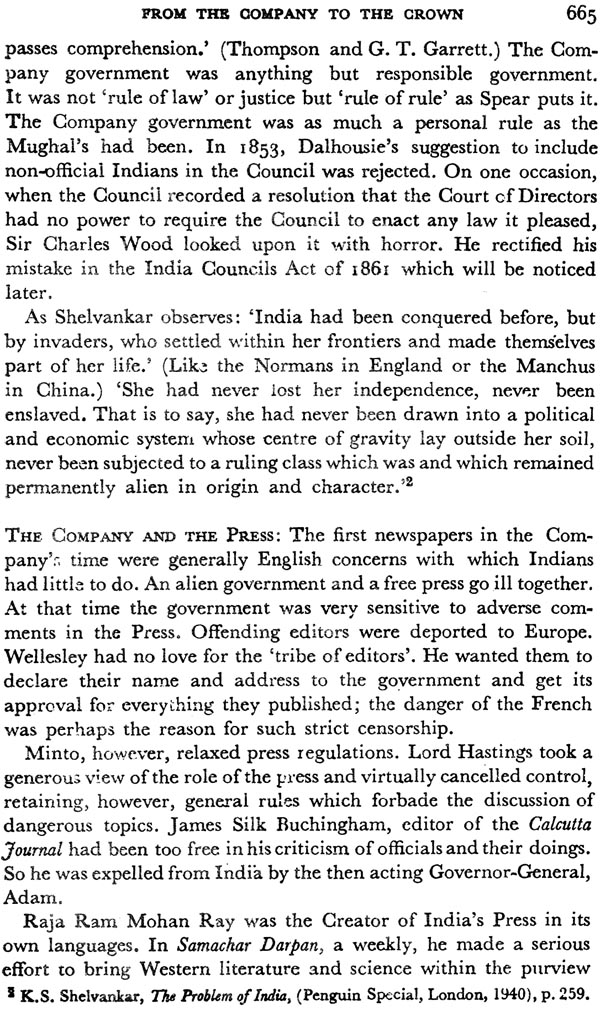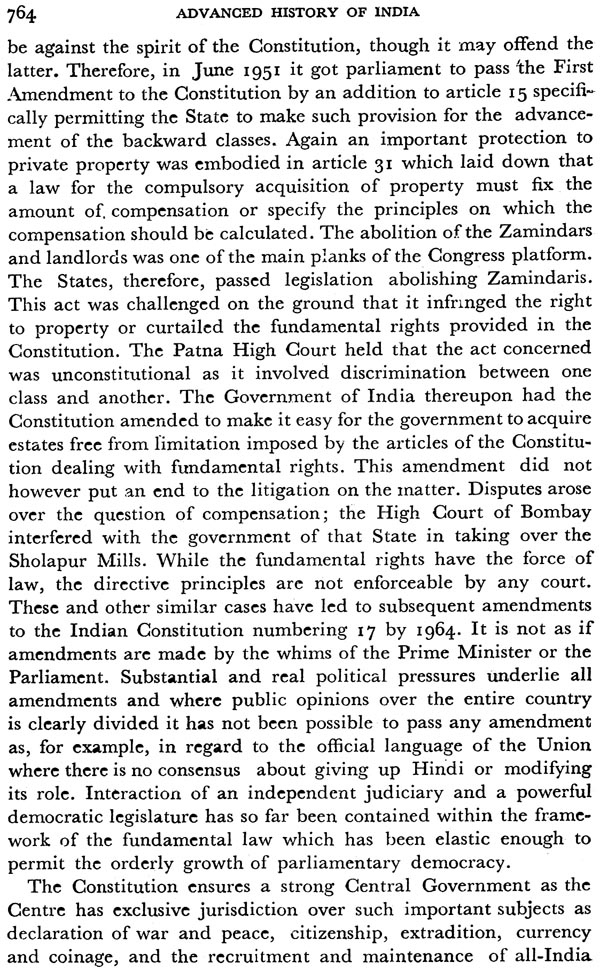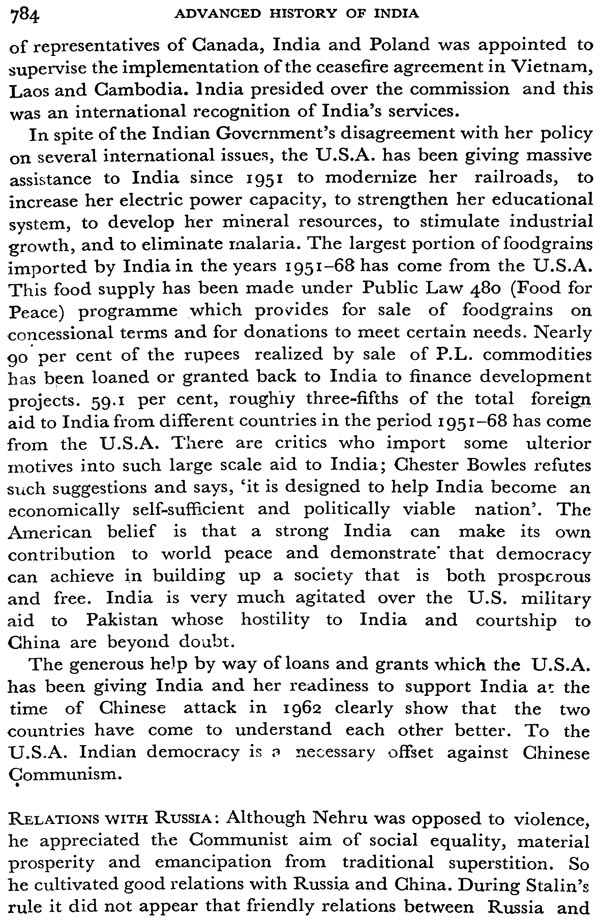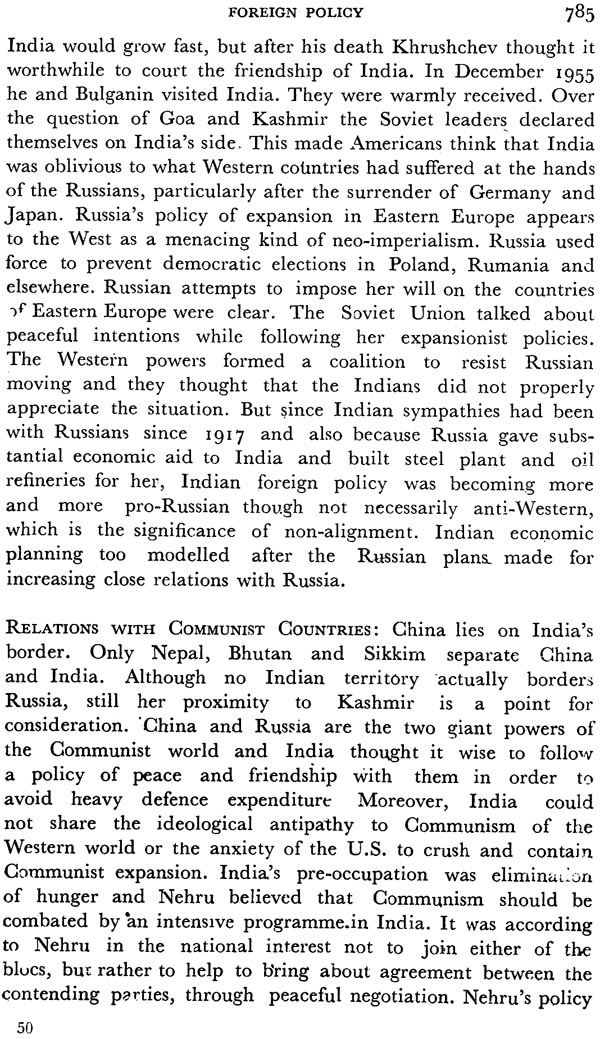
Advanced History of India
Book Specification
| Item Code: | NAR789 |
| Author: | Nilakanta Sastri and Srinivasachari |
| Publisher: | Allied Publishers Pvt. Limited |
| Language: | English |
| Edition: | 2018 |
| ISBN: | 8170231450 |
| Pages: | 882 |
| Cover: | PAPERBACK |
| Other Details | 8.50 X 5.50 inch |
| Weight | 1 kg |
Book Description
THE NAME 'INDIA' : 'India' comes from the name of the river which the Indians called `Sindhu', the Persians 'Hindu' and the Greeks `Indus'. Foreign chroniclers call the country 'India'. Indians themselves called their land Bharatavarsha' which now has been shortened into Bharat, after, the name of one of the most famous legendary kings of India. The Indians regarded Bharatavarsha. as the southern division of Jambudvipa, one of the seven islands, making up the world. In this book 'India' will be used in its historical sense till the march of events reaches the time of the partition of the country into India and Pakistan in 1947.
THE INFLUENCE OF GEOGRAPHY ON HISTORY: India occupies the central position among the three great peninsulas which project southward from the continent of Asia. The southern poi don of the country lies within the tropic zone, while its northern regions advance into the temperate zone beyond latitude 35°. Bounded on the north by the highest ranges in the world, the Himalayas, on the east, west and south by broad seas, India forms a geographical unity, virtually cut off from the rest of the world. But this has never meant her isolation, for by virtue of her position in the midst of the Indian Ocean and of her early cultural advancement she has, from the dawn of history, maintained unbroken contact with every civilization—Egyptian, Sumerian, Mediterranean and Chinese. The comparative isolation of modern times became pronounced in the period of British rule.
The importance of the Himalayan range for India consists in the climatic protection it affords against the influence of the water-less tracts of Asia, in the large rainfall which it collects and in the protection it gives against the invasion of the restless inhabitants of the steppes. From a remote period a certain number of Mongol immigrants have trickled into North India through Bhutan, Sikkim and Nepal. Never has there been an invasion of India from Tibet across the Himalayas by great armies or large bodies of people. But the recent occupation of Tibet by China with her modern means of transport and up-to-date weapons of warfare does not rule out the possibility of an invasion from there.
The configuration of India considered vertically presents three great regions characterized by sharply contrasting features, the Himalayan Region, the Indo-Gangetic plain and the tableland in the south. The crescent shaped Himalayan range in the north has a length of 1500 miles with a uniform breadth of about 13o miles. At each end, other mountain systems join the Himalayas. On the north-west we have the mountains which divide India from Afghanistan and Baluchistan and run from north to south decreasing in height towards the south and broken by such important passes as the Khyber and the Bolan. These passes have provided the route for foreign invaders, Greeks, Scythians, Afghans, Persians, Mongols who from earliest times have acted as modifying factors upon the historical development of the Indian population and culture.
On the eastern side, North India is shut off by a mountain wall skirting the low lying plains of the lower Brahmaputra, in the shape of a horse shoe. This wall is passable only upon the south and by this route there has been Chinese infiltration into India, from remote times. The recent Chinese incursions on the North-Eastern Frontier show how vulnerable the area is in spite of formidable hills and swamps.
The Indo-Gangetic plain is, the most thickly populated region of India, and figures most in the history of the country. The gifts showered by the Indus and its tributaries on the Punjab (the land of the five rivers) have made it, even in the grey dawn of history, the goal of the ambitions of the nomad tribes of Afghanistan and of the steppes of Central Asia.
Lower down the valley of the Indus, the arable land is restricted to a narrow belt along the river. The rapidity of its flow into the sea and its heavy deposits of silt are such that the Indus delta has been continually changing. On the eastern side of the delta stretches the Great Desert, across which communication is almost impossible. This desert prevented the Arabs in Sind from moving eastward and sheltered the Rajputs, in the middle ages, against Muslim attacks. It extends southwards to the sea and northwards almost to within a hundred miles of the Himalayas, where a narrow strip of land forms the only line of communication between the valley of the Indus and that of the Ganges. It is this strategic isthmus that has repeatedly been the scene of many decisive battles in the history of India.
The whole of the Gangetic plain is alluvial land. The wide waterways of the snow-fed rivers of the north and facilities for irrigation have sustained a teeming population. North India owes everything to the Ganges river system. No wonder that the Ganges has been held by Indians in loving worship as 'Mother Ganges', Gangs Mato, a name which recurs in the Mekong in Indo-China.
The Vindhya and Satpura ranges with the Narmada and the Tapati running westward parallel to them divide Central India from the Deccan (Dakshinapatha). The Peninsula proper is like a wedge cleaving the Indian Ocean into the Arabian Sea and the Bay of Bengal. Though the coast line is long, natural harbours are few and far between. The Deccan plateau is geologically the oldest part of India; its sides are formed by the Western Ghats and the Eastern Ghats which meet at the Nilgiris and then strike south-wards into a single subsidiary massiff ending in Cape Comorin.
As the plateau slopes eastward, rivers flow into the Bay of Bengal. These rivers are unimportant as means of navigation and communication on account of -the variable water supply depending on the freakish monsoons. Further, they are broken by rapids and waterfalls when they reach the precipitous edge of the Highland. The line of the Narmada carried across the peninsula is commonly held to be the boundary between North India and the Deccan. Because of the mountainous nature of the region and the swampy forest, communication between the north and the south was not easy before the railways were opened.
The south-west ( June-October) and the north-east (November-May) monsoons are as important to the hydrography of South India as the perennial snows of the Himalayas are to North India. After crossing the Ghats the air currents from the Arabian sea become drier providing scanty rainfall to the eastern ,region. Not until they reach the giant wall of the Himalayas do they drop all the moisture they have retained. For this reason the mountains of Assam can boast of the heaviest rainfall upon the earth. Such a downpour washes away the tracks and promotes a dense growth of forest. The Western Ghats form an unbroken line along the coast, leaving a narrow strip of fertile and picturesque land to their west from which there is no access to the interior except at the Palghat Gap opposite Coimbatore. The Eastern Ghats are neither so high nor so continuous as the Western Ghats. The flat mountain tops of the Deccan volcanic trap furnished excellent sites for Maratha fortifications, which recently fell into disuse, Mountain tops from the Himalayas to Cape Comorin have also served as sites of temples attracting thousands of pilgrims.
The coastal plain on the east is broader and drier than that on the west. The north of this plain is formed by the alluvium of the Godavari and the Krishna. The Carnatic plain watered by the Cauveri contains some of the most fertile lands in India. The Tungabhadra and the Krishna are good examples of river frontiers as well as the Narmada and the Sutlej. Raichur doab enclosed by the Krishna and the Tungabhadra was a strategic area at which several decisive battles were fought between the powers of the Deccan and South India.
It is now increasingly realized that the seas bounding the peninsula, far from being barriers, served as highways of commerce and colonization to the Indians.
The configuration of the coastline has undergone changes in historic times. Tamluk in Bengal and Kayal in Tinnevelly were once flourishing ports, but now they are land-locked. The port of Kaveripatnam mentioned in Tamil literature has been partly sub-merged in the sea. Tamil legends speak of some land and a river in the south being engulfed by the sea.
Climate is no doubt an important factor in the history of any country. But some historians, in their attempt to trace many traits in India's history, philosophy and art to its enervating climate, have overdrawn the picture. The rise of the Maratha power and of the Sikhs and the renascence of modern India should argue against laying undue stress on climate as a factor in Indian History.
**Contents and Sample Pages**
